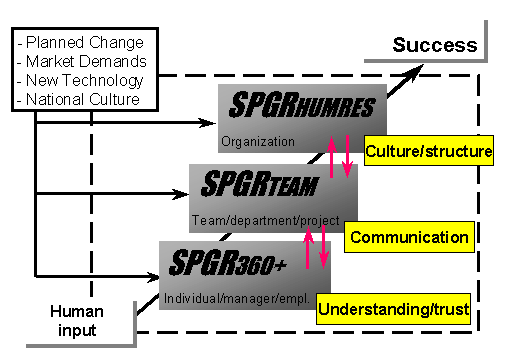SPGR Survey Types
There are several different types of surveys that can be run in SPGR, depending on the goal of the survey and what is to be measured and analyzed.

Common survey types
The most common SPGR survey types used are; TEAM, 360+ and Objects.
SPGR TEAM Survey (team)
The go-to tool for mapping the dynamics of a group of people, the TEAM survey is used to have all members of a group evaluate themselves and each other.
SPGR 360+ Survey (360plus)
For 360 evaluation of an individual (target member), for instance the leader of a team or department, where all respondents will evaluate that person. In addition, the target member can be asked about one or more query objects.
SPGR Object Survey (objects)
When the focus is on (abstract) query objects and not persons in the group, the object survey is usually the best fit.
Generic SPGR Survey
A more general setup allowing more fine-grained control over who will be evaluated and who will answer objects.
Specific survey types
Certain predefined survey types have been set up to simplify certain usecases.
SPGR Individual Objects
A predefined set of query objects for surveying one or more individuals regarding self-reflection, aspirations and ideals.
SPGR Leader Objects
A version of SPGR Individual Objects tailored for querying leaders, and as such is a good starting point for mentoring, coaching and otherwise help improving management behaviour a candidate.
Special survey types
Specialized survey types for special situations;
Free-rider
Not a regular SPGR survey, but a short survey with control questions regarding presence of free-riders / free-loaders and strong / dominant leaders within the group. A useful supplement in some situations.
Quick SPGR Survey
This is an abridged version of the SPGR TEAM Survey designed for larger teams where some accuracy in the SPGR scale is sacrificed to shorten the time it takes to complete a survey and thus allowing larger teams or more frequent surveys without the time it takes to complete a survey round becomes too great.
The SPGR questions are halved from 24 to 12, and this must be kept in mind when analyzing reports, since quite a bit of nuance is lost when the cross-correlation and corrective values from the other 12 questions isn't captured.